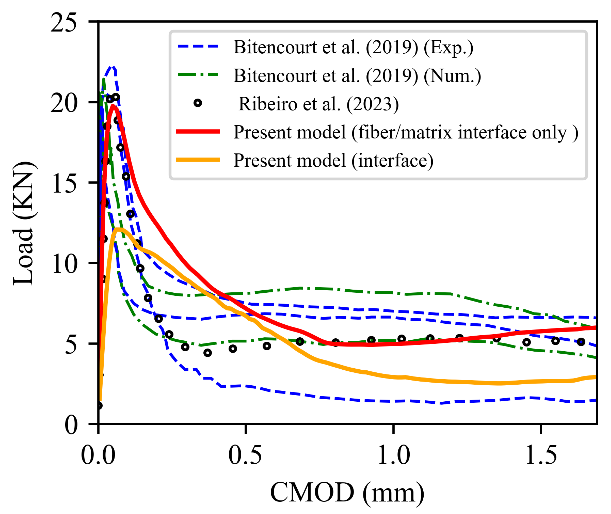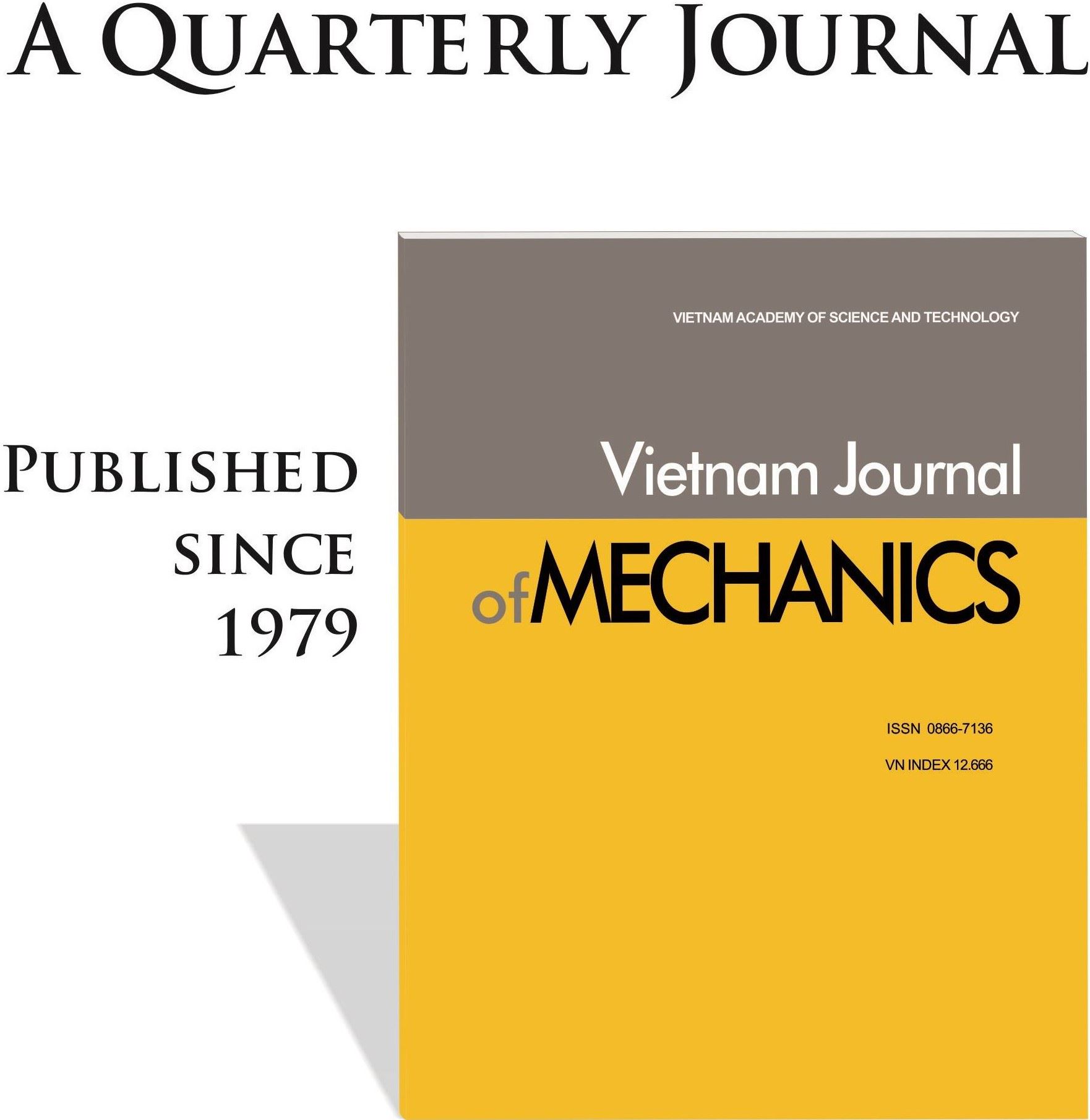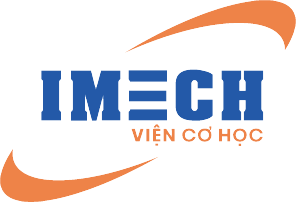Simulation of the effect of mortar-aggregate interface on meso-scale damage behavior of steel fiber-reinforced concrete
Author affiliations
DOI:
https://doi.org/10.15625/0866-7136/22341Keywords:
SFRC, phase field method, damage, crack, interfaceAbstract
This paper focuses on studying the effect of the interface between the mortar matrix and aggregate particles on the meso-scale behavior of steel fiber-reinforced concrete (SFRC). To achieve this, a phase field model enhanced by a cohesive law is applied to this specific context. Initially, the model is evaluated under a basic scenario with a single aggregate particle embedded in a homogeneous mortar matrix. The influence of interface parameters on various volume fractions of aggregate is examined, considering both the elastic and damage behavior of the material. The main findings are then applied to the meso-scale level of SFRC and compared with experimental results as well as recent models to validate the proposed effects.
Downloads
References
[1] A. Bentur and S. Mindess. Fibre reinforced cementitious composites, Modern Concrete Technology Series. CRC Press, (2006). https://doi.org/10.1201/9781482267747.
[2] L. A. Le, G. D. Nguyen, H. H. Bui, A. H. Sheikh, and A. Kotousov. Incorporation of micro-cracking and fibre bridging mechanisms in constitutive modelling of fibre reinforced concrete. Journal of the Mechanics and Physics of Solids, 133, (2019). https://doi.org/10.1016/j.jmps.2019.103732.
[3] A. E. Naaman and H. W. Reinhardt. Proposed classification of HPFRC composites based on their tensile response. Materials and Structures, 39, (2006), pp. 547–555. https://doi.org/10.1617/s11527-006-9103-2.
[4] Y. Chen, G. Cen, and Y. Cui. Comparative analysis on the anti-wheel impact performance of steel fiber and reticular polypropylene synthetic fiber reinforced airport pavement concrete under elevated temperature aging environment. Construction and Building Materials, 192, (2018), pp. 818–835. https://doi.org/10.1016/j.conbuildmat.2018.10.175.
[5] B. Belletti, R. Cerioni, A. Meda, and G. Plizzari. Design aspects on steel fiber-reinforced concrete pavements. Journal of Materials in Civil Engineering, 20, (2008), pp. 599–607. https://doi.org/10.1061/(asce)0899-1561(2008)20:9(599).
[6] Y. Zhang and D. Dias-da Costa. Seismic vulnerability of multi-span continuous girder bridges with steel fibre reinforced concrete columns. Engineering Structures, 150, (2017), pp. 451–464. https://doi.org/10.1016/j.engstruct.2017.07.053.
[7] A. Conforti, G. Tiberti, G. A. Plizzari, A. Caratelli, and A. Meda. Precast tunnel segments reinforced by macro-synthetic fibers. Tunnelling and Underground Space Technology, 63, (2017), pp. 1–11. https://doi.org/10.1016/j.tust.2016.12.005.
[8] V. M. C. F. Cunha, J. A. O. Barros, and J. M. Sena-Cruz. A finite element model with discrete embedded elements for fibre reinforced composites. Computers & Structures, 94–95, (2012), pp. 22–33. https://doi.org/10.1016/j.compstruc.2011.12.005.
[9] F. K. F. Radtke, A. Simone, and L. J. Sluys. A computational model for failure analysis of fibre reinforced concrete with discrete treatment of fibres. Engineering Fracture Mechanics, 77, (2010), pp. 597–620. https://doi.org/10.1016/j.engfracmech.2009.11.014.
[10] H.-Q. Nguyen, G.-K. Le, B.-A. Le, and B.-V. Tran. A cohesive fracture-enhanced phase-field approach for modeling the damage behavior of steel fiber-reinforced concrete. Engineering Fracture Mechanics, 311, (2024). https://doi.org/10.1016/j.engfracmech.2024.110603.
[11] C. Miehe, M. Hofacker, and F. Welschinger. A phase field model for rate-independent crack propagation: Robust algorithmic implementation based on operator splits. Computer Methods in Applied Mechanics and Engineering, 199, (2010), pp. 2765–2778. https://doi.org/10.1016/j.cma.2010.04.011.
[12] L. A. G. Bitencourt, O. L. Manzoli, T. N. Bittencourt, and F. J. Vecchio. Numerical modeling of steel fiber reinforced concrete with a discrete and explicit representation of steel fibers. International Journal of Solids and Structures, 159, (2019), pp. 171–190. https://doi.org/10.1016/j.ijsolstr.2018.09.028.
[13] L. Felipe dos Santos Ribeiro, C. Mejia, and D. Roehl. Multiphase and mesoscale analysis of the mechanical behavior of fiber reinforced concrete. Theoretical and Applied Fracture Mechanics, 125, (2023). https://doi.org/10.1016/j.tafmec.2023.103929.

Downloads
Published
How to Cite
License

This work is licensed under a Creative Commons Attribution-ShareAlike 4.0 International License.









